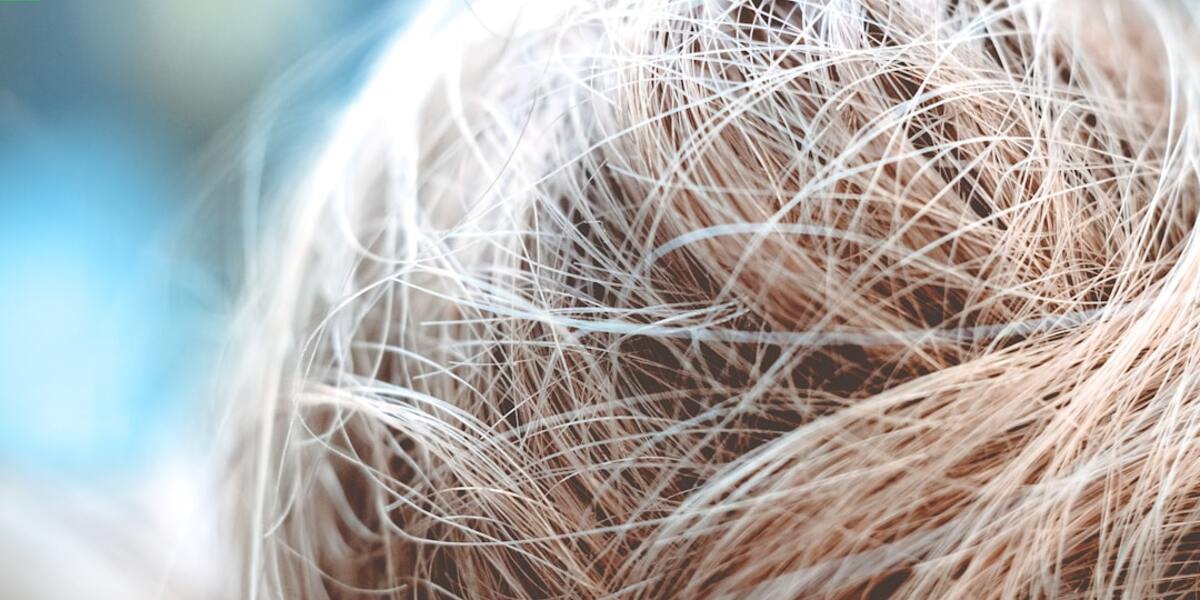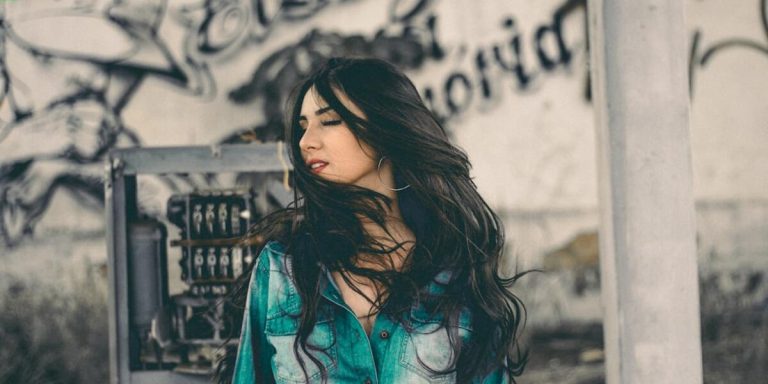Can Hair Colour Cause Hair Loss? A Deep Dive Into the Truth Behind This Common Query
The notion that “can hair colour cause hair loss” has been a common query in beauty and health forums. Many have speculated on the adverse effects of constant colouring, while others are skeptical about these claims. Indeed, there’s no denying that this topic stirs concern to individuals who regularly treat their tresses with various shades as part of their style or personal expression.
To enshroud this issue with clarity, it is essential first to delve into understanding the makeup of hair dyes and how they interact with our scalp biology. In this article we will explore not only can hair dye result in potential strand thinning but also what measures one could take to minimise such risks if any actually exist.
Did you know?
Although the chemicals in hair dyes can cause damage and breakage, they don’t actually affect the growth or loss of hair from your follicles. The root cause behind this common misconception is likely due to damaged strands falling out post-dye job.
Understanding the Impact of Hair Color on Scalp Health
The realm of hair care has significantly expanded, breathing life into an array of coloring options. However, with this creative freedom comes the question “Can hair color cause hair loss?” Unpacking this concern requires a deeper understanding of how these products interact with your scalp health.
Hair colors contain chemicals that penetrate the strands to alter their pigment effectively. The primary culprits are ammonia and peroxide, components notorious for inducing dryness by stripping off natural oils from your tresses and scalps. When hair becomes excessively dry and brittle; it is more susceptible to breakage which might initially appear as if you’re losing more hair than usual.
Harsh chemicals in some dyes can damage your locks, leading to possible thinning or weakening, but they don’t directly affect the actual follicles deep inside the scalp where growth occurs. This reduces fears about permanent balding from dye application. Focus on maintaining healthy practices with these products or choose safer alternatives available today. Safer options include organic pigments enriched with nourishing agents that offer better protection against potential harm.
Examining Chemical Ingredients in Hair Dyes and Their Effects
Hair dyes, popular for their ability to transform one’s appearance and boost self-confidence, have often been scrutinized owing to the chemical ingredients they contain. The question “can hair colour cause hair loss” is a common concern shared by many.
Firstly, it’s crucial to understand that our hair contains protein keratin which gives it strength and shine. Hair dye works by penetrating the outer protective layer of your strands (cuticle) and changing the natural pigmentation of your hairs from within.
Several chemicals in commercial hair dyes including ammonia, peroxide, PPDs (Paraphenylenediamine), resorcinol among others are known for causing scalp irritation or an allergic reaction which can lead to itching or inflammation – conditions not conducive for healthy follicle growth.
Ammonia lifts up your cuticles allowing other chemicals like peroxides coloured molecules into your cortex. This expansion provides way for these new foreign entities but at cost weakening underlying structure; regular usage implies constant damage reconciliation which over time may result in weakened brittle locks – ultimately leading towards increased breakage as well thinning out too soon than expected.
Peroxide removes original colour pigment paving path replacement with those present contained dye mixture.
Assessing Allergic Reactions to Hair Coloring Products
The world of hair coloring is vibrant, offering various hues that can dramatically transform one’s look. But the question often arises – “can hair colour cause hair loss?” Delving into this matter requires a deep understanding of allergic reactions to these products.
Now consider ammonia; many are familiar with its strong smell when opening a box of home dye kit for blonde shades especially highlights color kits! Ammonia breaks down your hairs’ natural barriers allowing color molecules enter easily but at the same time it weakens each strand ultimately causing them break off prematurely from dryness and brittleness.
Furthermore, peroxide used in most bleaches strips away the protective layers on your strands leaving them susceptible to environmental damage like sun radiation or harsh weather conditions both contributing towards accelerating rate balding pattern over time due constant use without proper care regime following post-color treatment period!
However alarming information might sound keep mind not everyone experiences adverse effects using dye products their mane – countless people have embraced art changing while maintaining healthy lush locks! The decisive factor here how body reacts certain ingredients so always advisable do patch-test prior full application prevent unexpected outcomes adversely impacting overall wellness level concerning holding onto beloved tresses long possible!
Common Myths and Facts About Hair Dye Related Hair Loss
There is a prevalent notion that hair dyes and colours can contribute to hair loss. This belief stems from consumer experiences where increased shedding or thinning of the hair has been noted post colour application, which has led many to connect these dots together.
However, understanding what happens when you apply dye onto your scalp will help dispel this myth. Hair dyes work by opening up the cuticle – the outermost protective layer of your strands- allowing for pigments to penetrate deep into each strand’s cortex—where natural hair pigment resides—to alter their color at a molecular level. It does not impact follicles beneath the skin surface, thus it doesn’t directly cause baldness.
Despite its inability to induce typical patterned baldness observed in conditions like alopecia areata or androgenetic alopecia, excessive use or misuse of strong chemical-based products may lead one toward less-than-desirable consequences including scalp irritation and damage leading indirectly towards an increase in shed hairs—a condition known as telogen effluvium—which could be mistaken for genuine long-term loss if viewed outside proper context.
In 2023’s beauty landscape prioritizing gentler alternatives over harsh substances seems prudent given rising interest surrounding organic options – owing largely due part raised awareness regarding potential damages caused through prolonged exposure synthetic compounds present within conventional offerings available on market today.
Debunking Misconceptions: Does Changing Your Hue Lead to Losing Your Locks?
With the fashion industry constantly evolving and hair colour trends changing frequently, many have been led to believe that frequent change in hair colours can result in hair loss. But how much truth lies beneath such presumed notions? Let’s decipher.
One of the most common misconceptions tied to this issue is perhaps that chemical-laden dyes accelerate thinning of your strands. However, modern scientific research has dispelled such myths as largely unfounded. Hair dye typically acts on the outer shell of your tresses without infiltrating into its root where growth happens – hence it doesn’t directly affect hair fall or regrowth per se.
Moving forward, heat application during hairstyling post-colouring might indeed cause some damage, but attributing all blame to our beloved hue-tubes seems a tad bit unfair now! The real culprit here isn’t necessarily ‘hair colour’ itself rather an overuse of curling irons and straighteners which weaken our shafts leading them towards premature breakage.
Moreover, allergic reactions caused by certain ingredients present in these products tend to be confused with signifiers for baldness too often than not. These symptoms aren’t indicative if “can hair colour cause hair loss” instead hint at possible scalp sensitivity issues needing immediate attention differently from addressing pattern baldness.
So next time someone scares you off suggesting continuous switchovers between Auburn red today & Mystic blue tomorrow will leave you shiny-bald; enlighten them about actual facts backed up through science: Changing colours just changes appearances — not quantities!
The Truth Behind Ammonia-Free Dye Claims and Follicle Damage
Ammonia-free dyes have been increasingly popular in the hair care industry. Promoted as a healthier option for your locks, these products claim to minimize follicle damage and thus prevent hair loss. That leads us to question – can hair colour cause hair loss?
And is ammonia-free dye truly non-damaging?
Contrary gloss marketing campaigns by some brands not all ammonia-free dyes are gentler or safer than their counterparts containing this chemical compound. Ammonia helps open up the cuticle layer of our strands so that it can penetrate deeper and let the color deposit more effectively on each strand leading to longer-lasting results.
Now coming over towards its alternative – amonia free dyes; they use other compounds with similar functions but often require stronger developers which could be aggressive when mixed right onto your scalp potentially weakening roots further fostering baldness issues.
It’s also essential understanding structural integrity plays immense role determining how much stress individual hairs endure while coloring processes no matter whether you’re using an ammonium-based product or otherwise.
While occasional gentle touchups might only leave minor impacts regular exposure even supposedly ‘safe’ substitutes still contributes cumulative harm overtime setting ground for future fallout concerns.
Preventive Measures for Minimizing Risk of Hair Loss During Coloring
One of the key preventive measures for minimizing hair loss during coloring is choosing a mild, ammonia-free colorant. Ammonia damages the protective layer and structure of your hair strands making them weak, brittle and more likely to fall out. If you’re really concerned about potential damage from chemicals, consider natural or plant-based dyes which are less likely to induce excessive shedding.
Secondly, maintaining adequate hydration of your scalp and hair is crucial if you choose to regularly dye your tresses. Hydration can act as a fortifying barrier against harsh chemical reactions that might occur during the dyeing process. Remember always to condition after shampooing since this helps restore moisture balance in your mane; keeping it strong enough to withstand possible strain from hair coloring processes.
Finally yet importantly – never ignore routine care requirements post-coloration! Regular protein treatments will strengthen weakened follicles while keeping conditioning treatments within reach aids in restoring lost luster due their extensive moisturizing properties thus ensuring overall healthiness amidst regular exposure towards artificial pigments introduced by various forms of dying activities .
Choosing Safer Alternatives for Tinting Without Trauma
Coloring your hair often seems like a great idea until you consider the potential risks. But, did you know there are safer alternatives that can help reduce the chances of harm to your tresses? A prevalent question people have been asking is “can hair color cause hair loss?” The answer may surprise many – it’s a yes and no scenario.
When done excessively or incorrectly, chemical-based dye indeed has the potential to damage your strands. However, this does not mean that coloring equates with losing locks necessarily; rather than leaving behind dyeing altogether, we need better choices for tinting without trauma.
One such choice involves opting for natural dyes over their chemically laden counterparts. Natural dyes contain less harmful ingredients and are usually gentler on both scalp and strands with consistent use. Henna is an age-old trusted remedy employed by many for its conditioning benefits alongside imparting hues ranging from reddish-brown to dark mahogany based on usage frequency.
Next up in line is vegetable rinses which give subtle hints of shade without causing any significant harm as they lack ammonia – the main culprit in conventional options leading towards brittleness eventually ending up in breakage and thinning out problems,. Whether beets extract leaves one red-haired or spinach gives lush green undertones – these certainly aren’t far-reaching dramatic results but come guaranteed sans side-effects providing healthy lustrous mane instead!
Essential Aftercare Tips for Dyed Strands Preservation
The first vital step should always be using color-safe shampoo and conditioner. These products are specifically formulated to handle dyed strands gently yet effectively, reducing undue strain while cleaning them.
Another essential aftercare tip involves minimal washing in the initial days post-coloring. Water opens up your cuticles which consequently can lead to faster fading of color or even breakage due to vulnerability. Henceforth, spacing out washes would ensure longevity of not just your new palette but also overall strand strength.
Heat-based styling tools could contribute significantly towards weakening both natural and colored strands thus amplifying potential risks of hair fall. Thus avoiding hot irons or blow-dryers unless absolutely necessary comes highly recommended as another viable measure for preserving dye without contributing negatively towards inherent strength.
Investing in deep conditioning treatments once every week aids immensely too! It replenishes lost moisture mitigating possibilities of dryness induced brittleness that could again escalate chances for unnecessary shedding over time.
Conclusion
In conclusion, while colouring can cause minor damage to your hair structure if done incorrectly or too frequently, it does not directly lead to baldness. So the specter of “can hair colour cause hair loss?” is largely mythical at best and debunked by scientific studies on this matter. The key here lies in maintaining a healthy post-colour care regimen that includes proper nutrition for your locks.
Feel free to delve deeper into our website where we tackle more such myths and provide factual insights related to various ‘Hair Loss Causes’. Our aim is always empowering you with the right knowledge so you are more informed when exploring potential reasons behind any changes in your crowning glory’s health status.







